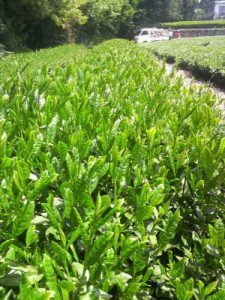
The tea cultivar Fuushun (ふうしゅん,富春) means “rich spring”.
This cultivar is more resistant to cold weather than Yabukita and has a greater yield, even if using less fertilizer.
Normally, you can expect at least a size of harvest 30% bigger with Fuushun compared to Yabukita.
The leaves are a bit bigger so they don’t look as good as Yabukita, but when brewed the quality is good.
History of Fuushun
Z1 is a cultivar whose origin happened with tea plants from the Tamamidori cultivar that where allowed to breed naturally.
In 1965, Z1 was crossed with Kanayamidori and the best offspring was selected. This resulted in Fuushun, which was finally registered in 1991 as Japanese tea cultivar number 41, with the purpose of sencha production.
Characteristics of Fuushun
This cultivar has vigorous growth and is quite robust. It can be a good option for tea cultivation in low-quality soils.
It is harvested 1 to 3 days later than Yabukita, and the branches tend to grow straight up.
If the tea leaves are harvested too late they become big and thick, hence the shaping process doesn’t go well. It’s best to pick the leaves early.
As a sencha, it has notes of citrus and an aroma similar to bancha. It tastes sweet, with some bitterness and astringency.
Fuushun is very weak against the white peach scale and anthracnose, but it’s fairly resistant to the gray blight.




